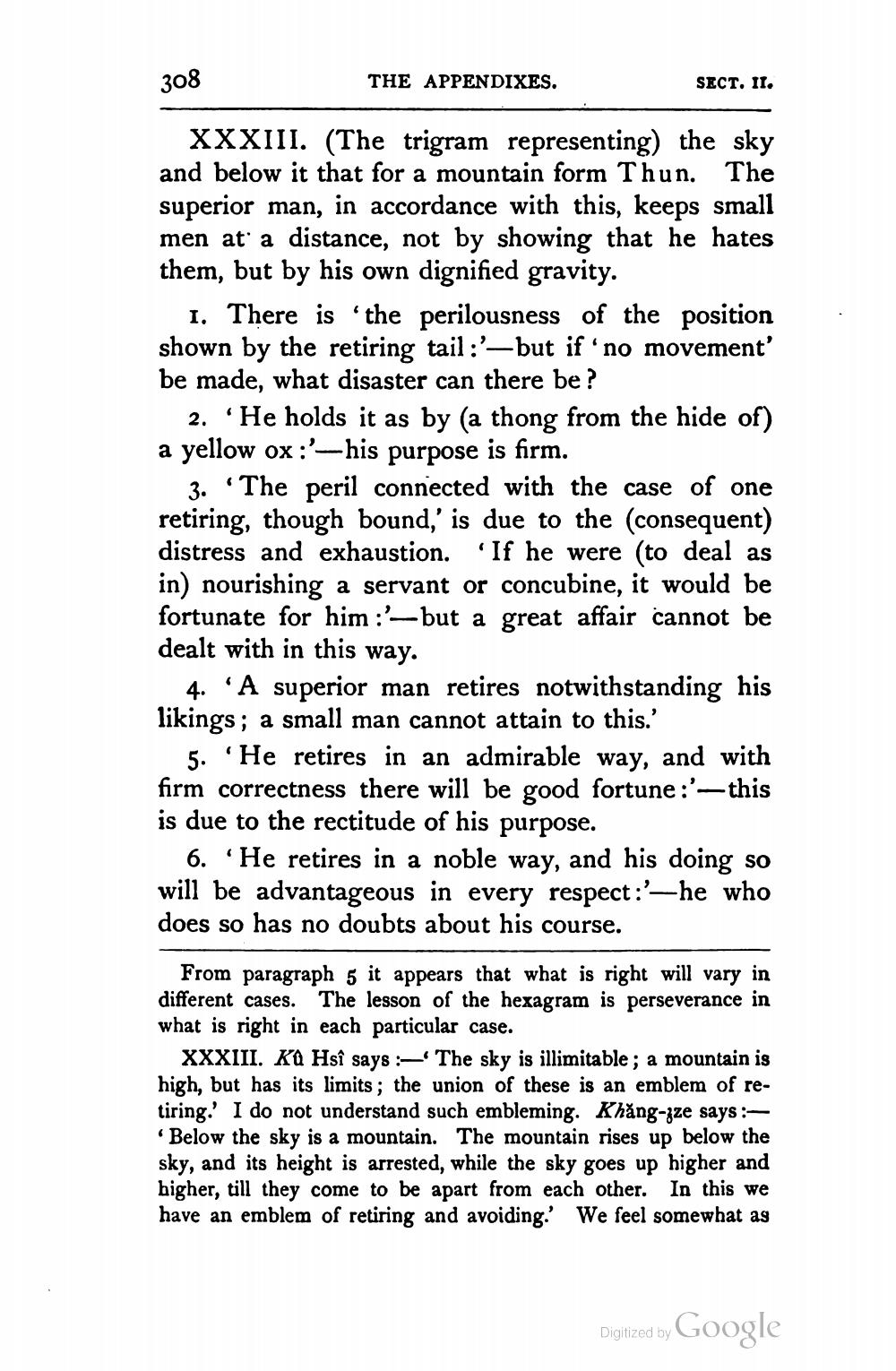________________
308
THE APPENDIXES.
SECT. II.
XXXIII. (The trigram representing) the sky and below it that for a mountain form Thun. The superior man, in accordance with this, keeps small men at a distance, not by showing that he hates them, but by his own dignified gravity.
6
1. There is the perilousness of the position shown by the retiring tail:'-but if 'no movement' be made, what disaster can there be?
2. 'He holds it as by (a thong from the hide of) a yellow ox:'-his purpose is firm.
3. The peril connected with the case of one retiring, though bound,' is due to the (consequent) distress and exhaustion. 'If he were (to deal as in) nourishing a servant or concubine, it would be fortunate for him:'-but a great affair cannot be dealt with in this way.
4. 'A superior man retires notwithstanding his likings; a small man cannot attain to this.'
5. He retires in an admirable way, and with firm correctness there will be good fortune:'-this is due to the rectitude of his purpose.
6. He retires in a noble way, and his doing so will be advantageous in every respect:'-he who does so has no doubts about his course.
From paragraph 5 it appears that what is right will vary in different cases. The lesson of the hexagram is perseverance in what is right in each particular case.
XXXIII. Kû Hsî says:- The sky is illimitable; a mountain is high, but has its limits; the union of these is an emblem of retiring. I do not understand such embleming. Khăng-jze says:'Below the sky is a mountain. The mountain rises up below the sky, and its height is arrested, while the sky goes up higher and higher, till they come to be apart from each other. In this we have an emblem of retiring and avoiding.' We feel somewhat as
Digitized by
Google




